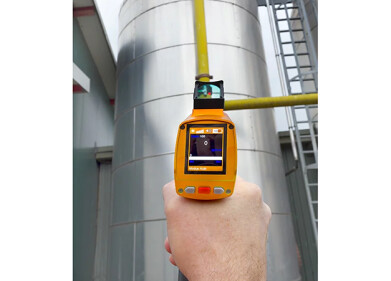Gas Detection
Avoid Misleading Gas Detector Readings
Oct 13 2020
If you use a personal safety gas detector in your job, you need to be aware that confined space accidents happen when gas detection readings are incorrect. Testing incorrectly could be the difference between life and death!
Without proper training and an understanding of gas hazards, the risk of confined space accidents increases. Awareness of potential hazards is essential to any confined space safety program and testing the atmosphere with an appropriate, properly functioning gas detector is the only way to determine whether it is safe to enter.
According to Crowcon, the following instructions should be observed when using instruments in Pumped or Manual Sampling modes;
- It is strongly recommended before proceeding that a function check is performed using the pump and sample tube with the gas/vapour to be detected.
- To reduce the risk of absorption of the gas/vapour in the sample tube, ensure the temperature of the sampling tube is above the flash-point temperature of the target vapour.
- Ensure the monitor is correctly calibrated for the target gas/vapour.
- Only use the sample tube supplied with the gas detector. It is strongly recommended that ‘reactive gas tubing’ is used for sampling gases/vapours that are likely to be adsorbed (examples: toluene, chlorine, ammonia, hydrogen sulphide, ozone, hydrogen chloride NOx etc).
- Keep the sample tube length as short as possible.
Bump Test
Prior to entry, a bump test must be carried out to confirm that the gas detector is functioning. Unfortunately, even though the gas detector performs diagnostic checks at start-up and during operation, it is often not possible to electronically detect a problem with sensor response.
Your gas detector cannot warn you that sensor ports are obstructed or whether the catalytic bead of a combustible sensor has been poisoned.
The only way to confirm that a gas detector is functioning, and is capable of responding to gas, is to expose the instrument to a concentration of target gas high enough to initiate an alarm situation while the instrument is in operating mode.
This procedure is often referred to as performing a bump test and it is a key to the safe use of portable safety gas detection equipment.
Pre-Entry Testing
Your gas detector needs to have a sampling pump. Pumped gas detectors can be used to sample locations at a distance from the detector via a sampling tube and sampling probe. This allows the worker to be safely located outside of the confined space but draw air from inside.
It is essential to sample air at various levels from floor to ceiling because some gases are heavier than others. The person taking the sample must allow sufficient time for the internal pump to pull the gas/vapour through the tubing to the gas detector sensor. Allow at least 3 seconds per metre plus the normal T90 response time of the sensor (typically 30-40 seconds).
Continuous Testing
After a confined space has been cleared for entry, it is essential for workers to monitor continuously the space. Atmospheric conditions can change without warning! Work activities in confined spaces such as painting and hot work can produce dangerous atmospheric conditions.
To read more please click here.
Digital Edition
AET 28.2 April/May 2024
May 2024
Business News - Teledyne Marine expands with the acquisition of Valeport - Signal partners with gas analysis experts in Korea Air Monitoring - Continuous Fine Particulate Emission Monitor...
View all digital editions
Events
Jul 10 2024 Birmingham, UK
Jul 21 2024 Cape Town, South Africa
Australasian Waste & Recycling Expo
Jul 24 2024 Sydney, Australia
Jul 30 2024 Jakarta, Indonesia
China Energy Summit & Exhibition
Jul 31 2024 Beijing, China


















